|
Examples of uplifting hope from despair are Trained Behavior Counseling and Peer support intervention:
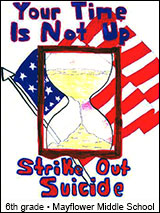 According to suicide prevention coordinator Colbie Caughlan, the staffs wanted help crafting health promotion messages that would resonate with young people. According to suicide prevention coordinator Colbie Caughlan, the staffs wanted help crafting health promotion messages that would resonate with young people.
"Youth learn from youth," says Caughlan. "That's what has happened forever."
Conference organizers arranged presentations about suicide warning signs and healthy, drug-free living. Then they set the young people loose with video camera, drawing paper, notebooks or a music producer.
Caughlan hopes the experience will unleash a wave of uplifting social networking including teen-generated web videos, music and even a comic book.
"If they say, 'Oh, then I went to a leadership conference,’ or ‘I did suicide prevention training and it taught me something so amazing that I actually helped save my best friend's life,' those are the things people are going to hold with them and tell their friends."
This Oregon initiative was inspired by a successful web-based suicide prevention strategy in Australia.
Breaking the silence of this tragedy:
Todd Denny, one of the music mentors in Portland, has led musical workshops to combat social ills on Northwest reservations for a decade. He believes technology could help break the stigma around a difficult, sensitive topic.
"One of the big challenges with suicide in all communities, not just tribal communities, is the silence and the secrecy," says Denny. "So a program like this allows people to break through those barriers of silence and secrecy, to express them, to tell their stories."
Over the course of a week, some of the teens did that through traditional Native American music. Others explored the suicide prevention theme through more contemporary genres such as rap and hip hop.
Jordan Hill, 19, who sings and plays guitar, chooses his lyrics carefully. "Every song that I've written is a message to somebody, which is why when I finally put out the album that I'm working on, I want to name it 'Memoir' because it's a message to everybody."
Hill's message is slated to become part of a comprehensive online health resource created for native youth by their peers.”

Abstract: American Indian youth at risk:
“Suicide is the second leading cause of death among American Indian youth. Elevated rates of suicide in Indian communities have been attributed both to outbreaks and to regional trends. We assessed the contribution of these two factors for a single tribe, and attempted to define a profile of individuals at risk. Data came from the tribe's registry of suicide attempts and completions for 1990-1993 and analysis of death certificates for the period 1985-1996. Using combined tribal and death certificate data, the average annual (age-adjusted) rate of completed suicide among tribal members was 44.7/100,000 for 1990-1993. Within the 45 suicide deaths and serious attempts in this time period, we identified one grouping of seven cases taking place in a 40-day period. All seven involved hanging and youth (13-28 years old). Using death certificate data alone, the average annual rate of suicide death for non-natives in the surrounding county in the period 1985-1996 was 22.7/100,000. Age-adjusted to the county population, the tribal rate for the same period was not significantly different (24.6/100,000). Tribal and county suicide patterns differed by age distribution and method but not by gender. We concluded that both regional trends and clustering contribute to suicide in this community. Further prevention efforts may need to focus on both unique tribal characteristics and shared factors among non-native neighbors. “
Source: Wissow LS, Walkup, Barlow A, Reid R, Kane S, Faculty of Social and Behavioral Sciences, School of Hygiene and Public Health, Johns Hopkins University, Baltimore, MD 21205, USA.
Indian Health Service’s (IHS) Community Suicide Prevention position:
The purpose of the Indian Health Service’s (IHS) Community Suicide Prevention Website is to provide American Indian and Alaska Native communities with culturally appropriate information about best and promising practices, training opportunities, and other relevant information regarding suicide prevention and intervention. The goal of the Website is to provide Native communities with the tools and information to create, or adapt to, their own suicide prevention programs.
Some Tribes are creating their own suicide prevention programs. However, it is difficult to obtain permission to share what they are doing out in the field due to issues of confidentiality. Nationally, there are only five evidence based suicide prevention programs that have met the requirements of SAMHSA’s National Registry of Evidence-based Practices and Programs (NREPP).
The Suicide Prevention Resource Center and the American Foundation collaborated to review and classify twelve programs as evidence-based (either Effective or Promising).
The National Suicide Prevention Lifeline is a national, federally funded network of local crisis centers providing suicide prevention and intervention services through a toll-free telephone number: 1-800-273-TALK (8255). Its mission is to provide immediate assistance to individuals in suicidal crisis by connecting them to the nearest available crisis center in their area.
Additional avenues to recovery include Traditional Spirituality and Trained Behavior Counseling:
In the Rapid City South Dakota Journal, Spiritual leaders say the suicides are rooted in an identity crisis that goes to a cultural and spiritual bankruptcy among Native American youth.
Young people have lost touch with tradition, they say. It's a problem that's grown worse with each generation and is a result of the marginalization of Native people through the reservation system forced upon them by the federal government many decades ago, said Raymond White Tail Feather, a Baptist minister and former tribal chairman.
"The tribes were contained on reservations and systematically their culture, the way of life, the federal government attempted to destroy this," said White Tail Feather. "When you do that to a people, what comes about is hopelessness."
Spiritual leader Wetsit presides over the Assiniboine Medicine Lodge, where young men and women participate in a right-of-passage ceremony based on prayer, sacrifice and reflection. He said a strong sense of identity, coupled with good morals and an understanding of one's own culture gives strength of character.
But many Native children are disconnected from that culture and spirituality, compromising that strength of character, he said. He said there is no simple answer.
"It's going to take us a couple of generations to work through all of that because we've got a whole bunch of families that are stuck, and they're not going to just come out of it overnight. There's a lot of healing, there are a lot of issues we've got to take care of."
Sources: www.ihs.gov/ | rapidcityjournal.com/
|
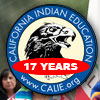
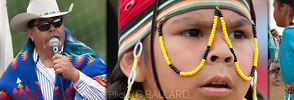

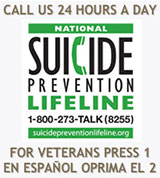
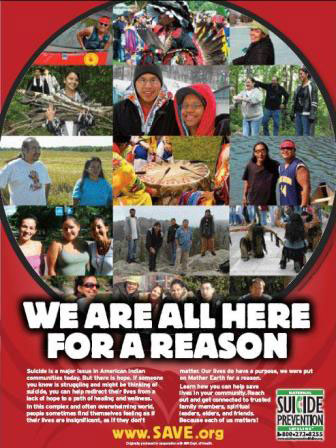
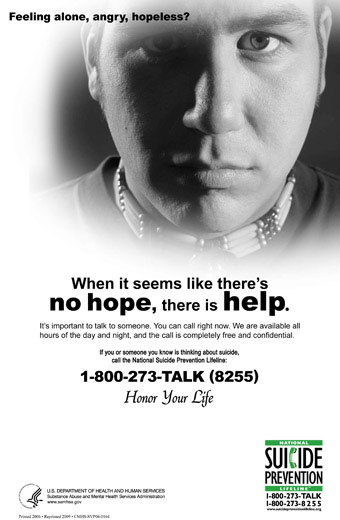
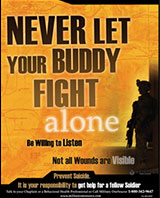
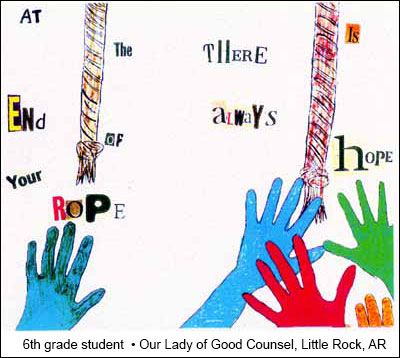

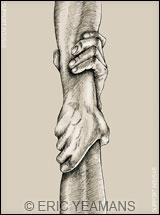
 According to suicide prevention coordinator Colbie Caughlan, the staffs wanted help crafting health promotion messages that would resonate with young people.
According to suicide prevention coordinator Colbie Caughlan, the staffs wanted help crafting health promotion messages that would resonate with young people.